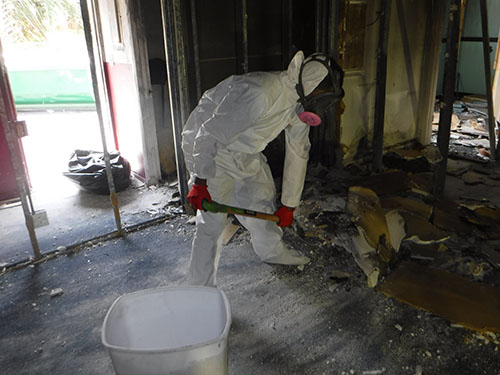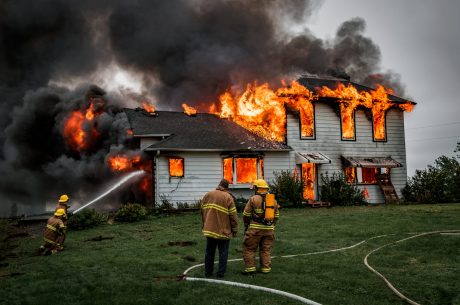Table of Contents
Fires can be devastating, impacting both the structure and contents of your property. Restoration isn’t just about cleaning up; it’s about bringing your space back to its original, safe condition. This guide will walk you through each step of the fire restoration process so that you’ll know what to expect—from the first assessment to the final cleanup—if you ever find yourself needing these services.
The Critical Nature of Immediate Action
The minutes and hours after a fire are crucial. Leaving damage untreated can worsen the effects of smoke, soot, and water, ultimately increasing repair costs and safety hazards. Acting quickly ensures the air quality is restored, prevents secondary issues like mold from water used in firefighting, and minimizes damage to your belongings and building structure.
Initial Assessment and Inspection by Professionals
Professional restoration teams begin with a thorough assessment. They inspect the extent of fire, smoke, soot, and water damage and create a roadmap for recovery. This initial inspection helps reveal both visible and hidden issues that could compromise the integrity and safety of the structure if left untreated.
Documentation and Insurance Claims Assistance
Fire restoration companies typically assist with documenting damages for insurance claims. This includes taking photos, making an inventory, and estimating repair costs. By coordinating with your insurance adjuster, restoration professionals can help expedite the claims process, easing the burden on property owners during a stressful time.
Establishing Safety Before Restoration Begins
Safety is a priority before any restoration work can start. Experts ensure that the property is structurally sound and free from immediate hazards such as exposed electrical wiring, weakened supports, and compromised air quality. This step is crucial for creating a safe environment for both the restoration crew and the property owner.
Customized Restoration Planning
Once the inspection is complete, the restoration team develops a tailored plan. This plan outlines the necessary repairs, cleanup tasks, timeline estimates, and expectations, so you’ll know what to anticipate. Having a clear roadmap can make the entire restoration journey feel more manageable.
Water Extraction and Drying (If Needed)
If firefighting efforts involved water, prompt extraction and drying are essential. Professionals use high-powered dehumidifiers, fans, and pumps to dry out the space, reducing the risk of mold growth. This stage is particularly critical for wood structures and flooring, which can warp or weaken if left damp.
Thorough Smoke and Soot Removal
Smoke and soot can be incredibly damaging if not properly removed. Restoration teams use advanced methods and specialized cleaners to lift soot and smoke residues from walls, ceilings, and other surfaces. By doing so, they protect materials from long-term staining and potential health hazards related to lingering smoke particles.
Deep Cleaning and Structural Assessment
After removing soot and smoke, professionals focus on deep cleaning all affected areas. Specialized cleaning solutions are used on surfaces like walls, floors, and ceilings to thoroughly remove residue and restore cleanliness. Restoration teams carefully assess any structural components affected by heat, smoke, or soot for potential stability issues, ensuring the area is safe and ready for use. By paying close attention to detail, they can effectively clean and revitalize the space without requiring structural alterations.
Odor Neutralization and Air Purification
One of the most challenging aspects of fire restoration is removing the pervasive smoke smell. Experts use specialized equipment, including air scrubbers and ozone generators, to completely eliminate odors. This step is essential to creating a fresh and habitable environment free from any lingering smoke contamination.

Personal Belongings and Content Restoration
Your personal items, such as furniture, electronics, and sentimental keepsakes, are carefully examined for damage. Restoration professionals use various cleaning techniques to salvage items, often transporting valuable or fragile items to an off-site facility where they can be meticulously restored.
Final Cleanup and Sanitization
In the final cleanup phase, professionals conduct a deep cleaning of all affected areas. This thorough sanitization ensures that the property is safe to occupy, free from any residual contaminants, and comfortable for daily use once again.
Inspection and Final Approval
Before the project wraps up, a final inspection is conducted. The team walks through the property with the owner to confirm that every aspect of the restoration meets quality standards and that all concerns have been addressed. This final step brings peace of mind and satisfaction.
Tips for Preventing Future Fire Damage
While it’s impossible to prevent all fires, there are steps you can take to reduce risks. Install smoke detectors, avoid overloading electrical outlets, and maintain heating systems and appliances. Being proactive with regular inspections and fire safety measures can make a significant difference in preventing fire incidents.
Conclusion
Recovering from a fire is a daunting task, but the structured process of professional restoration brings relief and clarity. By knowing each step—from assessment and planning to the final walk-through—property owners can approach the restoration journey with confidence.
FAQs
What’s the first step I should take after a fire?
Immediately contact your insurance provider and a fire restoration service. Avoid re-entering the property until it’s declared safe.
How do professionals remove smoke odors entirely?
Restoration teams use specialized tools like ozone generators and air scrubbers to remove even the most stubborn smoke odors, purifying the air thoroughly.
How long can the fire restoration process take?
It varies based on damage severity, but it typically takes a few days to several weeks. An initial assessment can provide a more accurate timeline.
Is fire restoration typically covered by insurance?
Most homeowners’ policies cover fire restoration. It’s wise to confirm your coverage details with your insurance provider.
Are there items that are usually beyond repair?
Items severely exposed to fire or heavy smoke may be beyond salvage. Restoration teams will assess each item to determine what can be saved.




 PuroClean Restoration Specialists
PuroClean Restoration Specialists